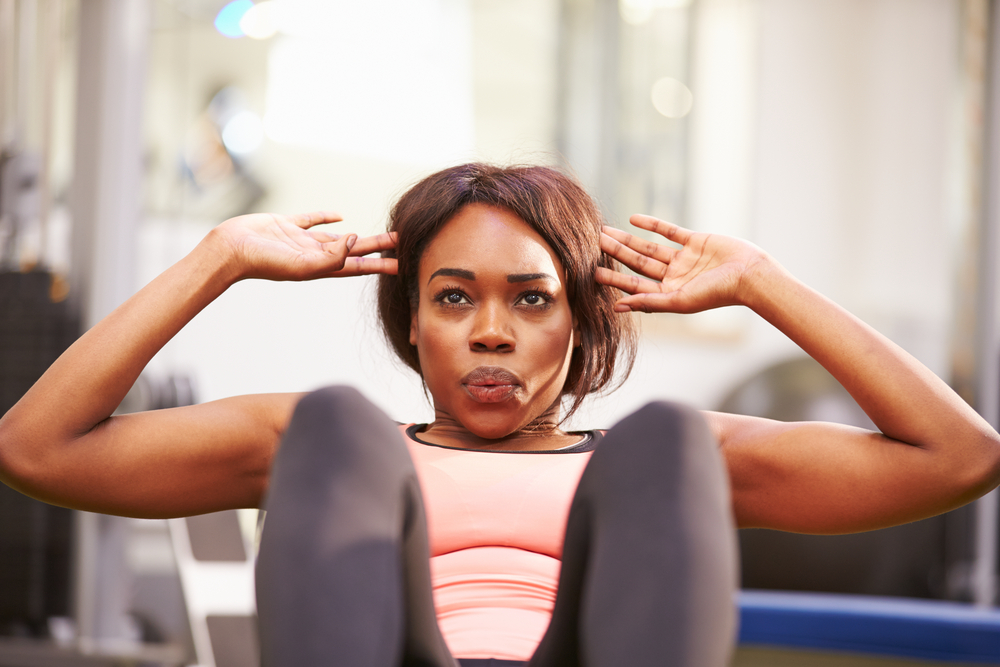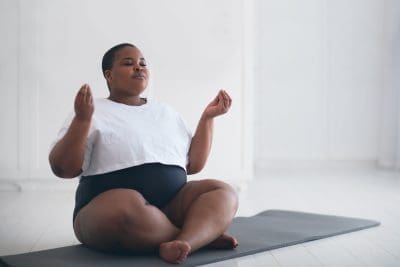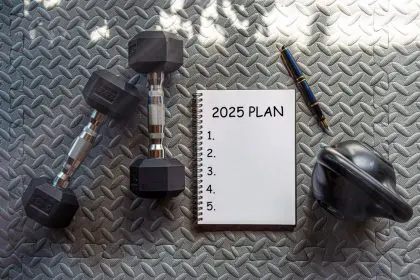You’ve probably done thousands of crunches hoping to build a strong core, but this outdated exercise is actually one of the least effective ways to develop the deep abdominal strength that supports your spine and improves your posture. Crunches only work a small portion of your core muscles while placing your spine in a compromised position that can lead to disc problems and chronic back pain.
Real core strength comes from training your entire core system as it’s designed to function, stabilizing your spine during movement rather than repeatedly flexing it in unnatural ways. Your core includes deep stabilizing muscles that crunches completely ignore, yet these muscles are crucial for protecting your back and generating power for everyday activities.
The most effective core training methods focus on teaching your muscles to resist movement and maintain stability under load, which is exactly what your core does during real-world activities like lifting, carrying, and maintaining good posture throughout the day.
Your core is designed to resist movement, not create it
The primary function of your core muscles is to stabilize your spine and pelvis while your arms and legs move, not to repeatedly bend your spine forward like crunches force you to do. Understanding this fundamental principle completely changes how you should approach core training.
Anti-extension exercises train your core to resist the natural tendency of your lower back to arch excessively when under load. This is crucial for protecting your spine during activities like overhead pressing, carrying heavy objects, or maintaining good posture during long periods of sitting.
Anti-lateral flexion movements teach your core to resist sideways bending, which is essential for preventing injury during rotational activities or when carrying uneven loads. These exercises build strength in the often-neglected side stabilizers that crunches completely miss.
Anti-rotation training develops your core’s ability to resist unwanted twisting forces, which is critical for spine health during sports activities, lifting, and daily movements that involve asymmetrical loading patterns.
Planks and their variations build functional stability
The plank is infinitely more effective than crunches because it trains your core in its primary stabilizing function while engaging multiple muscle groups simultaneously. Unlike crunches, planks strengthen your entire core system while teaching proper alignment and breathing patterns.
Standard planks should be held with perfect form rather than for maximum time, focusing on maintaining a straight line from head to heels while breathing normally. Quality trumps quantity when it comes to plank training, and 30 seconds of perfect form is more valuable than minutes of sagging, breath-holding planks.
Side planks target the lateral core muscles that crunches completely ignore, building strength in the quadratus lumborum, obliques, and deep stabilizers that are crucial for spine health. These muscles are particularly important for preventing lower back pain and maintaining proper posture.
Plank variations like single-arm planks, single-leg planks, or plank-to-push-up transitions add challenge and movement while maintaining the core stability focus. These progressions teach your core to maintain stability while other parts of your body are moving, which is how your core actually functions in real life.
Dead bugs teach core control and coordination
Dead bugs might look silly, but they’re one of the most effective exercises for building the deep core stability that prevents back pain and improves movement quality. This exercise teaches your core to maintain stability while your arms and legs move independently, which is a fundamental skill for healthy movement.
The dead bug pattern trains opposite arm and leg coordination while maintaining a neutral spine position, which is exactly the pattern your body uses during walking, running, and most daily activities. This makes dead bugs incredibly functional for improving real-world movement quality.
Proper dead bug technique requires maintaining contact between your lower back and the floor while moving your limbs slowly and under control. This teaches your deep core muscles to activate properly while your superficial muscles remain relaxed, improving movement efficiency.
Dead bug progressions can include adding resistance bands, holding weights, or increasing the range of motion to continue challenging your core as it becomes stronger. The key is maintaining perfect form and spinal position regardless of the progression level.
Carries build real-world core strength
Loaded carries are among the most functional core exercises because they train your entire core system to work together while you move through space carrying weight. This mirrors how your core actually needs to function during daily activities and athletic movements.
Farmer’s walks with heavy weights in both hands challenge your entire core to maintain upright posture while walking, building strength in all the stabilizing muscles simultaneously. This exercise also improves grip strength, posture, and cardiovascular conditioning while building core strength.
Suitcase carries with weight in only one hand create uneven loading that forces your core to work harder to prevent lateral flexion and rotation. This unilateral challenge builds anti-lateral flexion strength while improving hip stability and posture.
Front-loaded carries with weight held against your chest or overhead challenge your core’s anti-extension strength while improving posture and shoulder stability. These variations teach your core to maintain proper alignment under load while moving.
Pallof press trains anti-rotation strength
The Pallof press is one of the most effective anti-rotation exercises because it teaches your core to resist rotational forces while maintaining perfect posture. This exercise can be performed with resistance bands, cables, or even a partner providing resistance.
The key to effective Pallof press training is maintaining perfect posture while pressing the resistance straight out from your chest, then holding that position while your core resists the rotational pull. This builds incredible strength in the deep rotational stabilizers.
Pallof press variations include half-kneeling positions, single-leg stances, or overhead positions that add different stability challenges while maintaining the anti-rotation focus. These progressions build more complex stability patterns.
The breathing pattern during Pallof presses is crucial for developing proper core activation. Breathe normally while maintaining tension, which teaches your core to stabilize while allowing normal respiratory function.
Bird dogs improve posterior chain integration
Bird dogs train your core to stabilize your spine while your arms and legs move in opposite directions, building strength in the often-neglected posterior core muscles. This exercise is particularly valuable for people who spend long hours sitting or have poor posture.
The bird dog pattern teaches hip and shoulder dissociation while maintaining spinal stability, which is crucial for healthy movement patterns. Many people lose this ability due to sedentary lifestyles, making bird dogs essential for restoring proper movement quality.
Proper bird dog form requires maintaining a neutral spine while extending opposite arm and leg, focusing on length rather than height. The goal is creating a straight line from fingertips to toes while keeping your hips level and spine neutral.
Bird dog progressions can include holding positions longer, adding resistance, or performing the movement more slowly to increase time under tension. The key is maintaining perfect alignment regardless of the progression chosen.
Turkish get-ups integrate total body core strength
The Turkish get-up is perhaps the most comprehensive core exercise because it requires your entire core system to work together through multiple movement patterns while transitioning from lying to standing. This exercise builds strength, mobility, and coordination simultaneously.
Turkish get-ups train your core through multiple planes of movement while carrying load, which is exactly how your core needs to function during complex real-world activities. This makes get-ups incredibly functional for improving overall movement quality.
The complexity of Turkish get-ups requires focused practice and attention to detail, making them excellent for building mind-muscle connection and movement awareness. This consciousness carries over to other activities and improves overall movement quality.
Turkish get-up progressions start with bodyweight and gradually add load as movement quality improves. The key is mastering each position and transition before adding weight or increasing speed.
Building a complete crunch-free core program
Effective core training without crunches requires combining anti-movement exercises with integrated movements that challenge your entire core system. A well-designed program addresses all planes of movement and functions of the core.
Start each core workout with activation exercises like dead bugs or bird dogs to prepare your deep stabilizers, then progress to more challenging anti-movement exercises like planks and Pallof presses. Finish with integrated movements like carries or get-ups that challenge your entire system.
Frequency and volume for core training should emphasize quality over quantity, focusing on perfect form and progression rather than high repetitions. Most people benefit from core training 3-4 times per week with emphasis on different movement patterns each session.
The key to successful crunch-free core training is understanding that your core’s primary job is stability, not movement, and training it accordingly through exercises that build real-world strength and function.
















